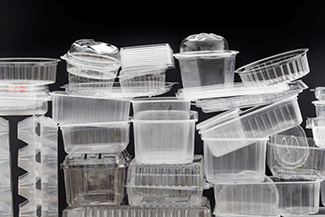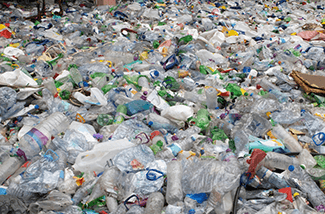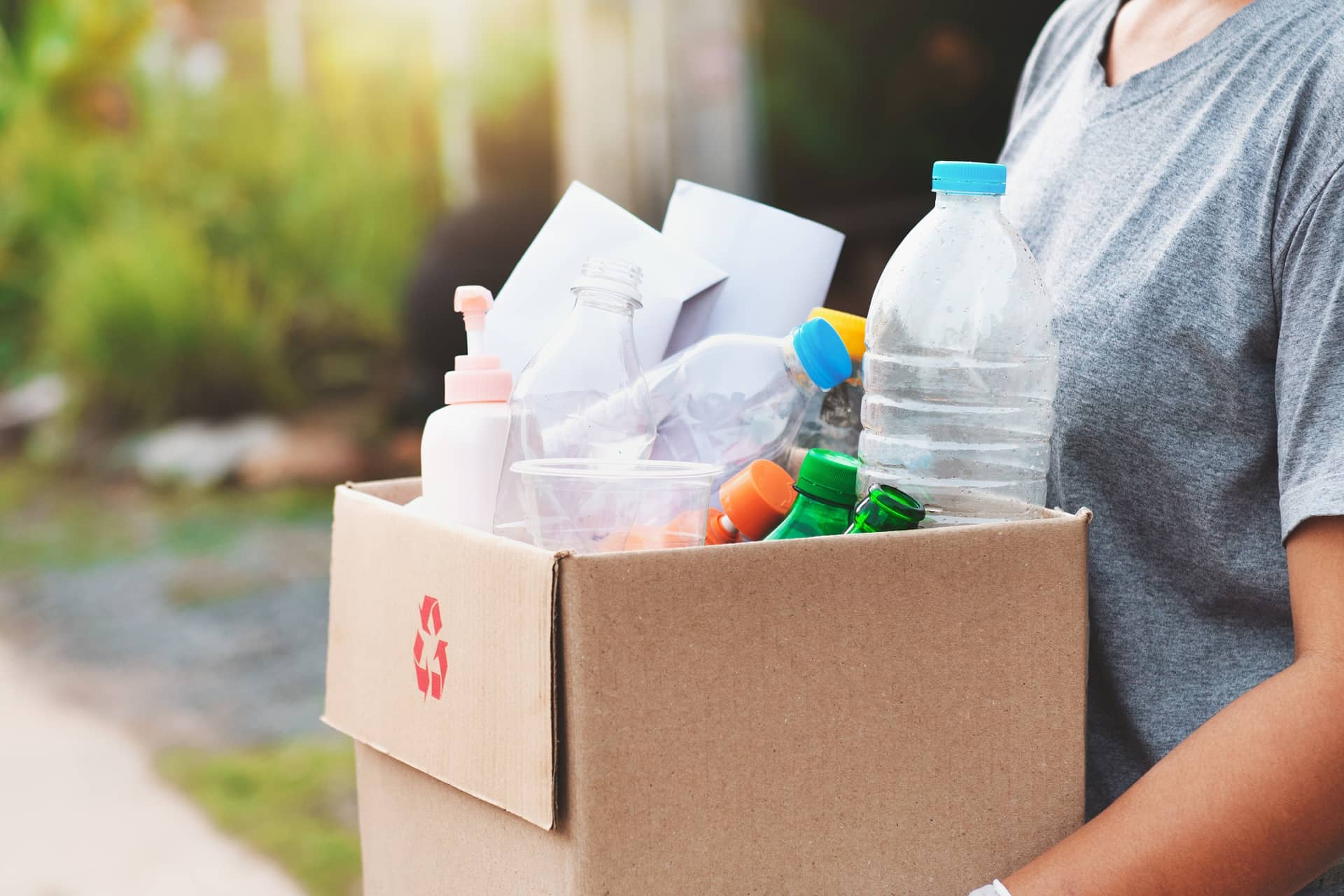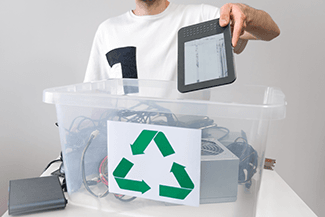By: Rosie Romero
https://rosieonthehouse.com/blog/the-current-state-and-future-of-recycling/
Every week, or every other week, most of us roll our recycling bins to the curb. How much of what is in those bins is recycled, and what ends up in the landfill? How many of our neighbors are doing their part to reduce, reuse, and recycle? What happens to the materials from our households to the processing facility to end markets?
We will explore that here. Before we do, understanding some key terminology will make deciphering this information easier.
- Recycled Material = All recyclables sold by MRFs to end markets. This also includes material captured through state deposit return systems (known as “bottle bills”).
- MRF = Materials Recovery Facilities (“recycling plants”).
- Film & Flexible Material = A flexible packaging material that is lightweight, portable, and not as rigid and hard as regular packaging films.
- End Markets = The market for the recycled materials to become something else.
The Numbers
The Numbers
 The Recycling Partnership reports in their 2024 report, “Based on a new methodology that tracks the fate of materials in the system, including material from single-family and multi-family homes, and includes film and flexible material, 21% of recyclable material is being recycled. Out of the 79% of lost material, 76% is lost at the household level and not collected, underscoring the importance of recycling access and household engagement.”
The Recycling Partnership reports in their 2024 report, “Based on a new methodology that tracks the fate of materials in the system, including material from single-family and multi-family homes, and includes film and flexible material, 21% of recyclable material is being recycled. Out of the 79% of lost material, 76% is lost at the household level and not collected, underscoring the importance of recycling access and household engagement.”
That’s pretty significant.
There is not a blog long enough to cover everything in their report. Click here to read it and view the many helpful charts and other graphics.
Household Participation in Recycling
There are two ways to look at recycling participation:
1. Program Participation | The percentage of households with access that use their available recycling service.
2. Overall Participation | The percentage of all households that participate in recycling.
Arizona is among the top states of households with access to recycling who do recycle at 67%. Hawaii is the highest at 72%. Vermont is the lowest at 40%.
Dorie Morales, publisher, Green Living Magazine states, “In the City of Phoenix only 43% of households participate in recycling. Non-participation is due to both lack of access and insufficient communication and outreach. Currently only 21% of recycling is being recycled, 3% is lost at the MRF, but 76% is lost to trash in homes. The key to solve this problem is education and awareness.”
Ending Up in the Landfill

In 2018, China banned 24 types of recyclables as part of its Operation National Sword policy. A 2020 study based on recycling in Arizona found that profits for every municipality surveyed had sunk dramatically. For example, in just two years, Sierra Vista’s annual revenue from recycling decreased by $32,000, a 75% drop from previous years.
One of the major non-recyclable culprits is packaging plastic. Data on packaging recyclability is limited, but the available information indicates that less than half of plastic packaging is recyclable.
The policy ended importing plastic waste with a contamination level above 0.05 percent. Before the policy, China imported the vast majority of recyclables from North America and Europe for two decades. The upside of this practice of buying recyclables was it brought raw materials for the growing industrial capacity of China. The downside was they received too much contaminated recyclables, causing environmental concerns such as air and water pollution.
This ban could be why much of the United States’ recyclables end up in landfills today. Nearly 15,000 tons of mixed paper and roughly 7,500 tons of glass containers are filling landfills.
So, what does that mean?
When recyclables are buried in landfills, they decompose with other waste materials. This process can take several years. During this time, the recyclable materials release methane gas. Recycling is an important way to reduce the amount of waste that ends up in landfills and to reduce greenhouse gas emissions. Recycling conserves natural resources, reduces pollution, and saves energy.
End Markets

For the residential recycling system to operate effectively, there must be market demand for the commodities it produces. For an item to be considered recyclable, it must have a viable path to becoming something else, such as clothing, containers, or packaging material, for example.
One of the most powerful drivers of end markets is demand from companies who have pledged to use more recycled material in their packaging. Policy changes and consumer expectations for sustainable packaging choices are compelling reasons for companies to accelerate their demand for recycled raw materials for all packaging types.
Recycling facilities or MRFs face the challenge of low prices relative to processing costs as they sell their commodity to the market. Most privately owned MRFs now charge processing fees to community recycling programs, which not only face capital-intensive costs but incur these processing fees, which are usually passed on to the consumer.
Where Do We Go From Here?
The 2023 Knowledge Report from The Center for Sustainable Behavior & Impact details how to accelerate recycling best practices.

Two of the key questions asked were:
- “What does it take for people to recycle well every chance they get?”
- “How can we best address the intention-action gap?”
As reported, eight in 10 Americans report that recycling is worth the effort. Yet, over half of household recyclables end up in trash bins instead of recycling bins, creating economic and environmental costs.
They also state there are five requirements of an effective residential recycling system:
1. All packaging should be recyclable.
2. All U.S. households need access to recycling.
3. Households need to engage in recycling.
4. Recycling facilities should be able to process 95% of the recyclable material they receive into salable commodities.
5. End markets for recyclable materials should be sufficient so recycling facilities can sell their commodities.
To ignite changes in recycling behavior, Recycling Partnership suggests these changes:
• Systemic communications. We must build a communications infrastructure that can help people embrace ongoing change and make learning easy and rewarding.
• Build people’s confidence in recycling outcomes. We must provide Americans more transparency with support, reassurance, and guidance to protect their confidence in recycling and increase participation.
• Tailor engagement and outreach to different audiences. We need segmented multi-layered interventions to meet the audience’s motivations, ethnographic considerations, and more to drive behavior change.
• Design recycling systems with behavior in mind. Together, we must bring new thinking and behavior-centered design to alleviate the difficulties and confusion associated with household recycling.
E-waste

In our January 20, 2024 article, Arizona Recycling Guide: What and #WhereToRecycleEverything, we discussed items that can be recycled and where to recycle them. Recycling electronics needs to be reiterated.
We have become increasingly dependent on electric devices and tend to upgrade each time there is a new version. Old devices (about eight out of every 10) end up in a landfill or unsafe scrapyard, therefore, rendering them e-waste. These are items with a battery or plug that is beyond repair or unwanted by the owner. It includes all electronic devices and electronic parts discarded, like computers, keyboards, remote controls, wires, video game systems, toner cartridges, stereos, tablets, chargers, and home appliances like microwaves, electric cookers, and heaters.
There are 25 certified e-waste recycling companies in Arizona, according to Sustainable Electronics Recycling International. Click the link to find the ones closest to you.
Participation Matters
If you can participate in a recycling program, take full advantage of it, and educate yourself on what can and how they should be placed in the bin. If your home is not part of a regular recycling pick-up program, take small steps, collect what you can, and deliver them to nearby public recycling centers. You can find a list of centers in Arizona, here






